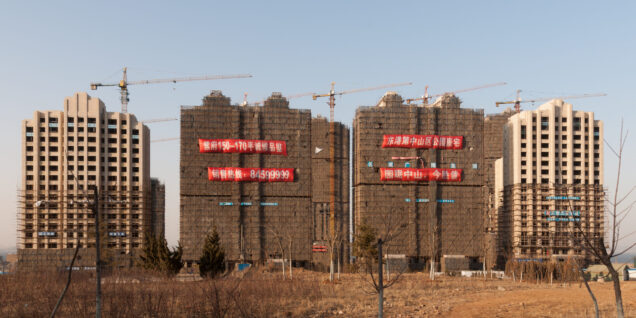– by Paolo Balmas –
Chinese GDP grew by 4.5% in the first quarter of 2023 on an annual basis, and by 2.2% on a quarterly basis. Once again, the results of the Chinese government’s economic management have surpassed the expectations of economists around the world, including those who participated in the Reuters survey, which had projected a maximum growth rate of 4% for the first quarter of this year. The specter of the Chinese economic mystery continues to loom over the minds of the brightest and most respected economic thinkers in the technical and academic landscape of the planet. Why? Nobody outside of China likes the answer, but it is simple: the state’s management of the economy limits the damage caused by finance and speculation, and, most importantly directs a portion of monetary production towards productive activities, those recorded in GDP statistics.
In advanced countries, those defined as market economies, this does not happen. In these countries, there is no longer a state guide for productive activities, as there was during economic booms such as the golden years of the Italian or Japanese economy, for example. Speculative activities are favored, those that involve a monetary transaction in exchange for a certificate of ownership, as is the case in the world of finance, which is not reflected in GDP statistics. The problem is that behind this speculative system, wealth tends to accumulate towards almost permanent centers of gravity, creating economic and social inequalities that then have an impact on productive activities (i.e. on those who should and could carry them out). In this way, society becomes increasingly dependent on debt (increasing the money supply), but it is used to support consumption, i.e., to purchase assets, instead of being utilized for productive purposes. The ones who suffer the most are small and medium-sized enterprises (SMEs), which continue to represent between 70% and 80% of employment in any advanced country.
China manages to maintain a balance (albeit somewhat fragile) between productive activities and speculation. This allows it to achieve economic growth, distribute the money created by commercial banks more equitably, and most importantly, ensure that a portion of this money reaches SMEs. However, China also faces a series of structural problems that suggest a decline in the coming months or even years. Some analysts are warning investors and policymakers in the West to be prepared for a sort of global recession due to an imminent crisis in the Chinese economy. Beyond the general (and in some respects delicate) transformation that the Chinese economic system is undergoing, the only supporting evidence for this thesis seems to be the decline in productive activities in the construction sector.
According to the National Bureau of Statistics of China, investments in the construction sector as a whole have decreased by 7.2% in the first five months of 2023, worse than the previous record of a 6.2% decline a month earlier. Specifically, investments in the residential sector have dropped by 6.4% in these first five months, much more than the -3.9% decline recorded in April. This corresponds to a decline of approximately 22% in square meters of residential space constructed in China. The effects have not yet been felt, as in May the decline in new home loans was only 0.9% on an annual basis. However, home prices increased by 0.1% in May. The trends in Europe appear to be very different. Despite significant variations from country to country, home prices generally increased during the lockdowns due to Covid-19. Banks stimulated property sales in the subsequent months, and now there is a new decline in prices due to some banks being more cautious in granting mortgages (this may vary from country to country and even from city to city).
Despite the significant differences between the European and Chinese economic systems, the underlying structural problems in the construction market are not so different. Real estate speculation seems to be the same everywhere. On one hand, some in the West argue that a high unemployment rate is necessary to manage a national economy, while on the other hand, it seems that the desire to maintain a rapid pace of construction at all costs persists, even in China, resulting in over 10% of homes being vacant. Certainly, some of these homes belong to those who own second or third properties. However, this does not seem to explain everything, and there are no precise official statistics. This is because the construction sector is one of the main sources for economic systems worldwide to introduce new money into national and international markets.
In China, the construction boom that followed the rural-to-urban population shift and accompanied uninterrupted economic growth over the past 40 years has come to an end. Construction continues, but the pace cannot be the same as before. China is facing what seemed to be the crisis of the century, namely the collapse of major property development firms that were unable to pay interest on their bonds. In essence, it appears to be an adaptation (although relatively controlled) to new construction rhythms. However, this has repercussions on the cement, steel, aluminum, energy, water, transportation, labor, and credit markets. Understanding how this structural change is and will be managed will have significant implications for China’s near future. In Europe, the problem has been going on for a much longer time. Here, it seems that a balance has been found among banks, builders, and authorities, which has led to concerning levels of speculation in various regions. Most notably, it has caused housing prices to rise unexpectedly and excessively in cities such as Dublin, Amsterdam, Milan, Luxembourg, and others. The problem that now arises in Europe is very serious and concerns the success of the European Green Deal plans. The objectives are to make Europe the first continent with zero emissions by 2050, with significant medium-term targets for 2030. The construction sector is clearly under scrutiny (by analysts, not the public) as it is the primary cause of CO2 emissions and the second-largest consumer of water (after intensive farming). On one hand, there will be a need to give up on the speculation around that 10% of vacant houses and apartments. It will be necessary to find ways to produce “green” steel and cement (which some countries are investing in), and finally, a higher, if not maximum, level of energy efficiency must be ensured for existing buildings (a particularly complex issue in Europe, given the existence of centuries-old buildings in many cities). All of this needs to be achieved without reducing the amount of credit injected into the markets.
Subscribe to access all news items






June 26, 2023
Economia, English, Notizie